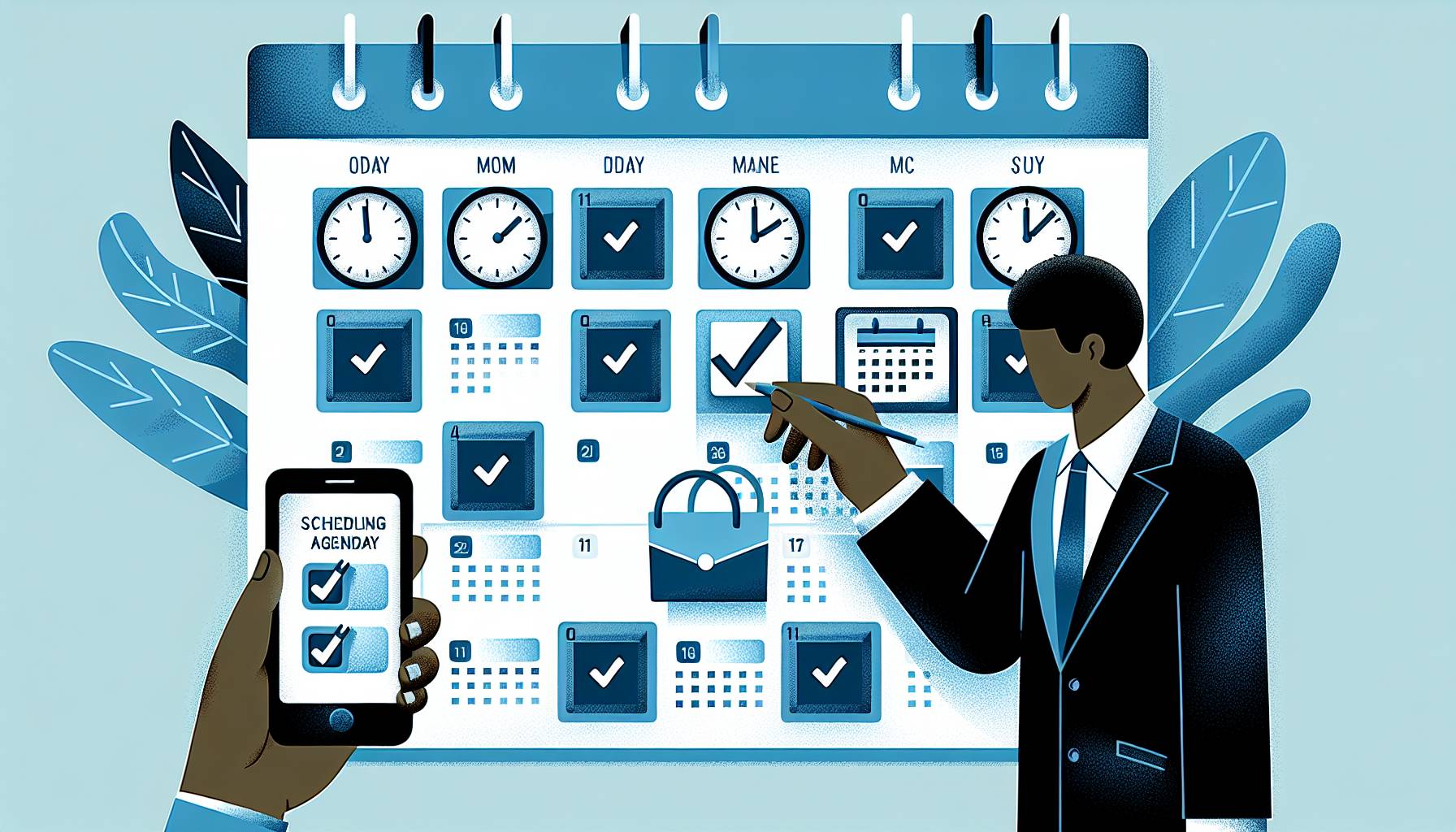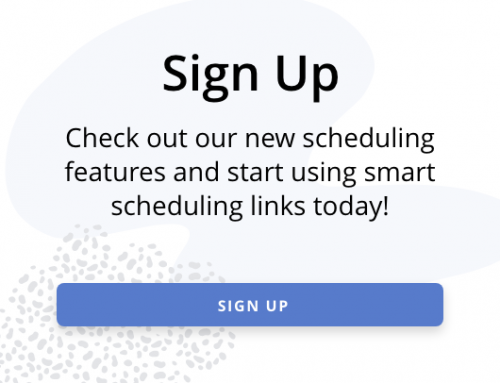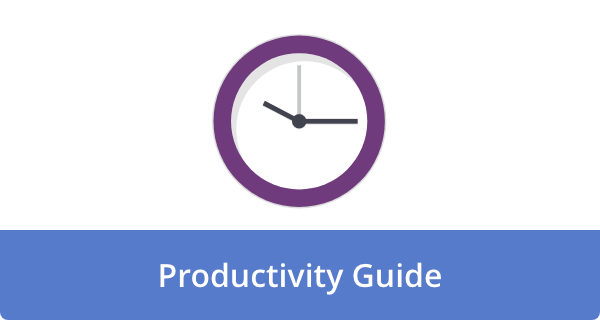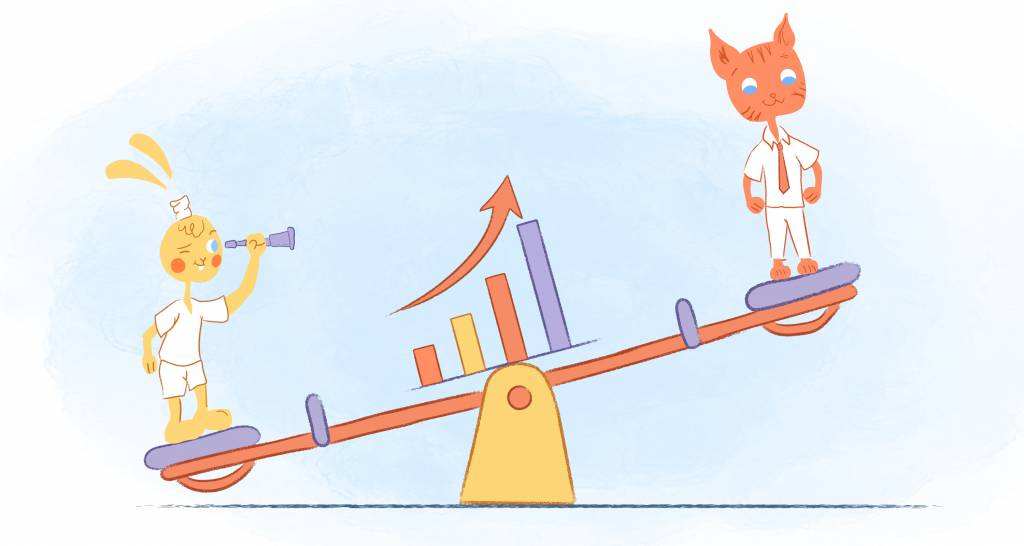

Picture this: You’re standing at the helm of a highly productive day, ready to conquer your schedule like a well-oiled machine, but as you zero in on your upcoming meetings, a sense of dread washes over you. Will these gatherings derail your plans for world domination? Here is your ultimate weapon for smart meeting scheduling — a carefully curated bit of time-saving tips that’ll render your meetings efficient, engaging, and dare we say, enjoyable! By combining the power of technology, prioritization, purposeful planning, clear expectations, flexibility, and consistent evaluation, we can streamline your day and supercharge your meetings with our smart scheduling guide. So brace yourself and get ready to unleash your most productive self!
Embrace Technology to Improve Scheduling
Embrace technology to transform the scheduling process into a streamlined and efficient routine. There is a myriad of software and applications designed specifically for optimizing the organization and management of meetings, appointments, and tasks. One prime example is scheduling platforms like Calendar, Doodle, Calendly, or x.ai, which not only streamline appointment-setting but also eliminate the back-and-forth of finding a suitable time. By syncing with the attendees’ calendars and your own, these services automatically find the best time for everyone and book the meetings accordingly. In addition, other features, such as email notifications, reminders, and virtual meeting room integrations, create full-circle solutions for seamless scheduling.
Moreover, technology enables the opportunity for data-backed improvements in scheduling. For instance, most scheduling tools provide valuable insights and analytics about meeting patterns, duration, and frequency. With this information at your fingertips, you can identify potential bottlenecks in your schedule and address them with precision. In addition to analytics, utilizing Artificial Intelligence (AI)-powered meeting schedulers like Clara and Meetingbird can help you further optimize decisions and take your time-management skills to new heights. Embracing technological advances in scheduling has never been more advantageous — saving you time and enhancing productivity in the long run.
Prioritize and Allocate Meeting Duration Wisely
Prioritize and allocate meeting duration wisely to ensure maximum efficiency and effectiveness. In a world where time is a precious commodity, adopting a strategic approach to scheduling meetings can make a significant difference in your day. Start by ranking meeting agendas based on their importance, and earmark appropriate durations depending on the complexity of each topic. You could allot more time to crucial decision-making sessions compared to routine update meetings. Curtailing lengthy discussions, you not only keep everyone focused but also foster a culture of punctuality that ultimately enhances your organization’s productivity.
To maintain this innovative meeting culture, consider integrating efficient tools like meeting analytics to gauge the average meeting durations, attendee participation, and collaboration levels, allowing you to optimize the way meetings are conducted. Additionally, employing meeting scheduling software automates the process of finding suitable meeting times and prevents conflicts. In turn, your organization experiences an increase in efficiency and benefits from dynamic collaboration, moving you one step closer to achieving your desired goals. Always remember, strategic scheduling is a game-changer in ensuring that every minute of your meeting-packed day counts!
Determine Your Meeting’s Purpose and Participants
Kicking off your meeting planning with a clear purpose and thoughtfully chosen participants can save time and boost productivity for everyone involved. Start by defining the meeting’s objective, whether it is to brainstorm new ideas, resolve issues, or make crucial decisions. Once you have a solid goal in mind, select your participants carefully, taking into account their expertise and relevance to the topic at hand. By being selective with who you invite, you not only ensure that your discussion remains focused but also encourage more meaningful contributions from those attending.
To help streamline this process, consider using digital tools like calendar apps or project management software to identify and invite the right participants easily. For example, many apps allow you to tag team members with specific skills or interests, making it simple to find the perfect attendees for your meeting. Furthermore, fostering a meeting culture that prioritizes clear agendas alongside relevant background materials can also help your attendees better prepare in advance, thereby reducing the likelihood of time-wasting digressions or misunderstandings. By thoughtfully planning your meeting’s purpose and participants, you’ll be well on your way to achieving efficient and fruitful gatherings.
Set Clear Expectations and Agendas for Maximum Efficiency
Harnessing the full potential of meeting efficiency starts with setting clear expectations and agendas. When participants are aware of the purpose and goals of a meeting, they are better equipped to cut through the fluff and navigate directly to the vital topics that need to be addressed. One way to implement this practice is through a well-prepared agenda containing key objectives, estimated time frames, and assigned roles for each discussion point. This approach promotes better time management, enhances productivity, and ensures that all participants are aligned. Moreover, a comprehensive agenda distributed in advance also allows attendees to adequately prepare themselves for the meeting, thus contributing to a more fruitful outcome.
A vital aspect of maintaining clear expectations is to establish and adhere to time limits, as doing so exhibits respect for everyone’s busy schedules. Time boxing — allocating specific time slots for each discussion point — has been an effective method in preventing meetings from becoming directionless and unproductive. For instance, a manager could communicate a 15-minute time frame for discussing a specific project update, ensuring a focused exchange of information before moving to the following agenda item. Consequently, enforcing such time limits through a designated “timekeeper” further accentuates the need for everyone to respect these boundaries and instill a culture of efficiency within the organization. A focus on fostering an environment where employees value their time and are empowered to contribute effectively leads to improved productivity, streamlining the workday, and creating a successful, thriving enterprise.
Prepare for the Unexpected: Flexibility is Key
Embracing flexibility in meeting scheduling can significantly save time and alleviate stress caused by unforeseen circumstances. For instance, when creating a meeting agenda, consider allotting buffer time between the scheduled sessions or events to accommodate unexpected delays or discussions that may run over the allotted time. This additional cushion of time allows the staff to address any issues without feeling overwhelmed, and it prevents the entire schedule from being derailed due to one unexpected event. Furthermore, incorporating a contingency plan for unforeseen situations, such as technical difficulties or the sudden unavailability of key attendees, will minimize stress and ensure that the meeting proceeds smoothly.
To further enhance flexibility, consider using scheduling software or online meeting platforms, which allow for real-time updates and easy rescheduling when needed. Many of these tools offer the ability to adjust the agenda on the fly, ensuring attendees are aware of any changes without manual intervention. With the ongoing increase in remote work, these platforms facilitate collaboration among team members in various locations and time zones while maintaining a sense of organization. Ultimately, incorporating flexibility into your meeting scheduling strategy not only enhances your overall efficiency but also fosters an adaptable and agile work culture, equipping your team to handle sudden changes with ease.
Analyze and Optimize: Evaluate Meeting Effectiveness
Efficient meeting scheduling is only part of the equation; evaluating a meeting’s overall effectiveness is crucial for streamlining your day. This process entails looking beyond the surface and delving deeper into the quality of the meetings held, addressing key elements such as whether objectives were met, attendees’ participation levels, and the accuracy of time allocations required for each discussion point. For example, a time tracking tool enables you to identify which meetings regularly overrun their scheduled time or which topics frequently require follow-up gatherings. Additionally, requesting feedback from participants can help identify any recurring issues that may be hindering productivity.
To ensure meeting optimization, it’s essential to implement strategies geared towards improvement based on the analysis of meeting effectiveness. By clearly defining the purpose and agenda before each meeting, participants arrive with a clear understanding of expectations, thereby saving time that would otherwise be wasted on clarifying objectives. Employing a meeting facilitator to maintain focus and pace, and taking timely breaks when necessary, can also lead to more productive discussions. Ultimately, continuously analyzing and implementing adjustments to your meeting structure guarantees a more efficient work environment, enhancing the overall day-to-day operations and productivity of your team.
Closing Thoughts
In conclusion, leveraging technology to improve scheduling, prioritizing meetings wisely, and determining their purpose and participants will undoubtedly pave the way for a well-organized day. Moreover, setting clear expectations and agendas drives efficiency, while a flexible attitude helps mitigate frustrations during unforeseen changes. Continuously analyzing and optimizing your approach to meetings will ultimately lead to enhanced productivity and free up valuable time, making smart meeting scheduling an essential tool in the modern professional’s toolkit.











Abby Miller
Student at UC Berkeley, currently working on a degree in Electrical Engineering/Computer Sciences and Business Administration. Experienced in CSX, productivity management, and chatbot implementation.